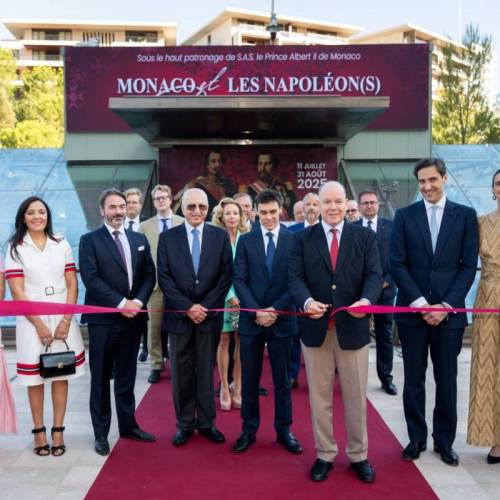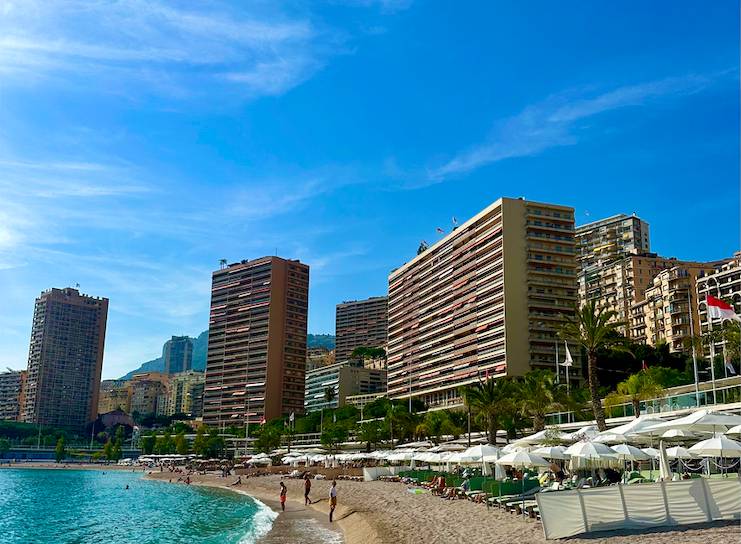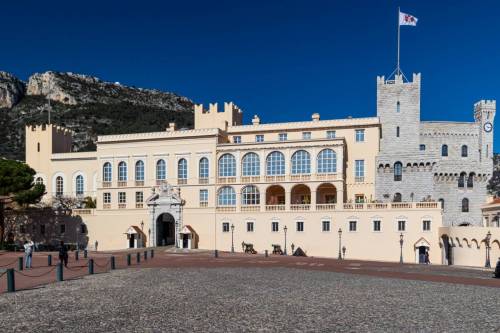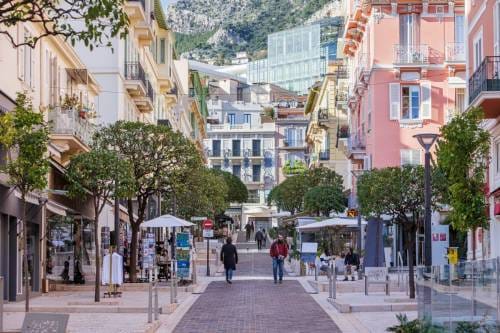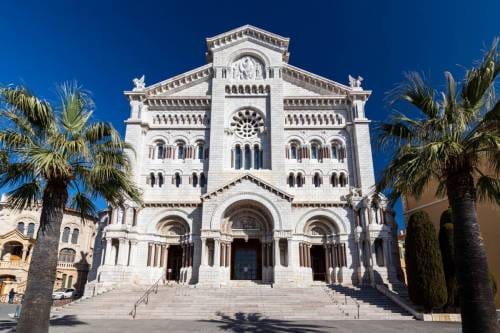You must have certainly heard of the Monaco Larvotto district! This unique part of the Principality is a favourite with its residents and tourists alike. A list of what it is famous for may be quite long. Let’s take a look into the past to witness Larvotto’s birth and future popularity.
The coastal strip east of the Princely Rock used to be really swampy and unadapted for living. Just imagine, back in 1699 it was inhabited by two people only! In the late 18th century, just a few dozen families lived a bit further down the hill (currently Place des Moulins). However, even back in the day, the pebble beach next to a palm-filled road, was already popular with the locals. We may thus say that the future Larvotto was meant to be.
One of the first steps towards it being urbanized was the opening of a water pumping station, attended by Prince Charles III and Crown Prince Albert.
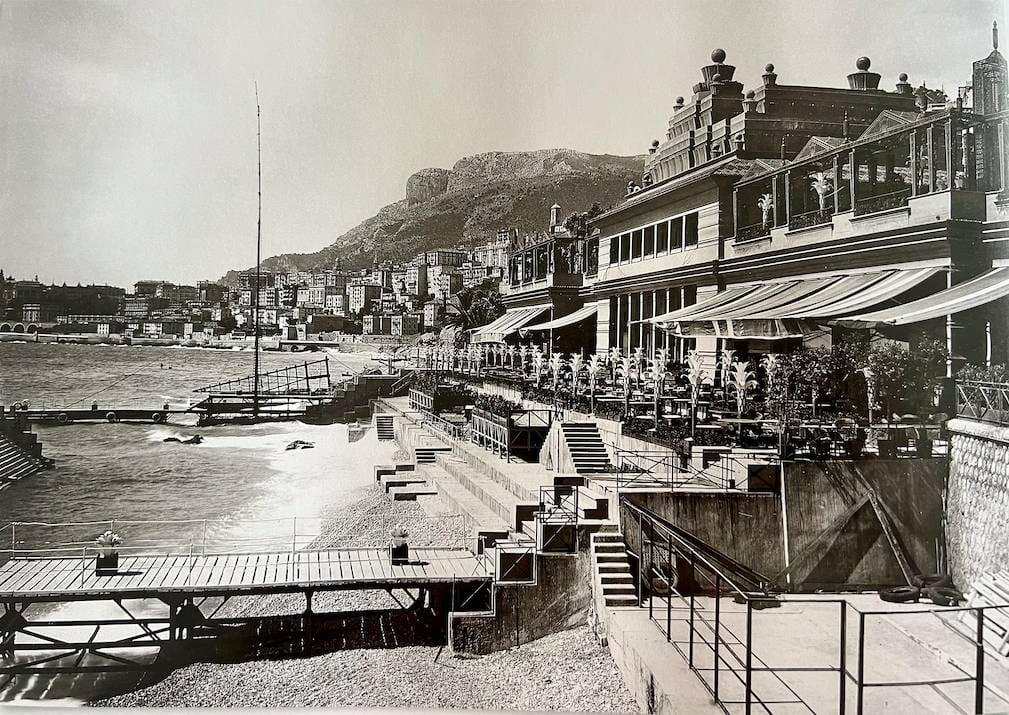
Seaplane on the beach
The year 1912 was particularly important for the Larvotto area. In March, the Principality hosted a seaplanes competition landing right on the shore. Among them was the first French seaplane by Caudron-Fabre.
Manufactured by the Caudron factory in July 1911, that same year it was modified to meet the requirements for the competition in Monaco. True, the Caudron-Fabre only came fifth out of nine, however it did stand out as the only amphibian aircraft, capable of taking off from land and water alike without as much as changing the landing gear.

Outlines of the future district
The 1930s witnessed one of the three major transformations of the Larvotto area and the beach in particular. A retaining wall was erected to separate the beach and the Larvotto baths from the Bas Moulins boulevard. By 1931, the beach, pebble back in the day, was thus outlined.
At that same time, the Summer Sporting was constructed. A road connected Le Portier to the Monte-Carlo beach, a tennis club, a private beach and a hotel built in the 1920s. A dynamic advertising campaign was then launched in the future Monte-Carlo seaside area.
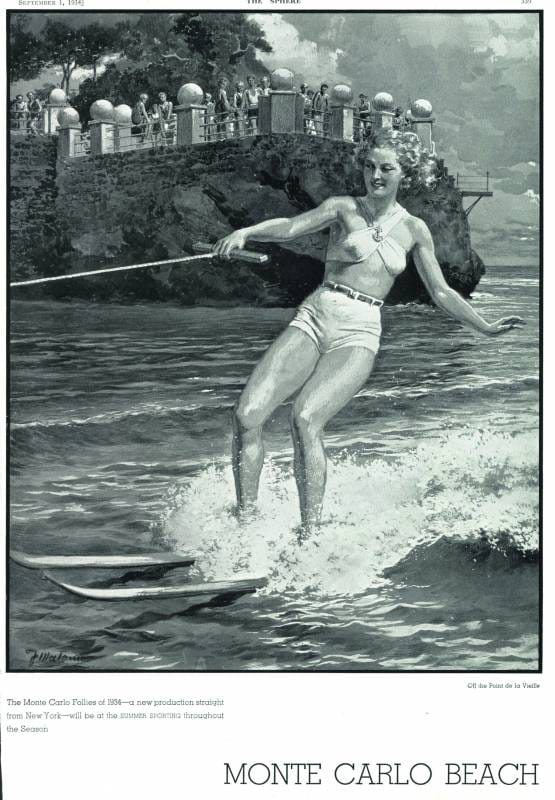
Prince Rainier III at the origins of the modern Larvotto
The “prince-builder” Rainier III famously contributed to the Principality’s development and urbanization. The Larvotto beach we know today is the result of a 54,000 m2 extension into the sea, ruled over by Prince Rainier III in 1961. In 1963, construction was completed increasing Monaco’s territory by 10 %. Eventually, large dams were built along the coastline, followed by beach restaurants.
1965 marks the construction of the beach area. Its pebbles were then replaced by sand, and breakwaters installed to protect it from waves. The building of the Monte-Carlo Sporting followed, opened in June 1974.

In 1966, Prince Rainier III signed a decree marking the start of a new major building project. A railway line used to run through the area. Following the demolition of the railway tracks, part of the coast was made available. The land was bought for cheap by a local developer, Gildo Pastor, who invested into building residential areas along Princess Grace Avenue.
By the mid 1960s, the district was large enough to accommodate a number of shops. The beachline was easily accessible for cars, with some of them literally “bathing” next to the vacationers.
New urban era
In modern times, Larvotto has undergone another transformation, offering us its new face. The beaches were reconstructed and new promenades built. Not surprisingly, by the end of 2022, Larvotto beacame home to the Principality’s most expensive residential properties. Back in 2021, a square metre in Larvotto was pricier than any other Monaco area, exceeding the 50,000 euro mark. 2022 witnessed a general decrease in the Principality’s real estate prices. Larvotto, however, has reached its record of 65,520 euros per m2.
Construction works are currently underway for yet another extension into the sea. A new residential seafront area, L’Anse du Portier, features modern buildings and private villas all bathed in greenery. A total of 6 hectares will accommodate a small marina, a swimming pool, several shops and exhibition halls. Vehicle access will be completely underground and safe.

The construction of yet another impressive residential complex, Testimonio II, stretching from Boulevard Italia to Avenue Princesse Grace, was launched back in the second quarter of 2017. Initially, the project was set for completion in 2024. It is running well ahead of schedule, however.
Testimonio II will mark a significant milestone in the Principality’s long-term urban development. Throughout its entire cycle, from the conception to implementation, the most innovative solutions were introduced to ensure an eco-friendly approach. The two Testimonio II towers, 30 to 32 floors high (100 m and 110 m respectively), are to become the tallest residential buildings on the entire French Riviera. The complex will house a nursery for 50 children and the International School of Monaco, designed for 700 students. Testimonio II will be complemented by a luxurious Bay House: 56 exclusive apartments and five villas, each of them equipped with private terraces and swimming pools.

It must be said that the 378 apartments in the new residential complex, just a few steps away from the Monte-Carlo Bay Hotel & Resort, will be allocated to Monaco citizens. Three years ago, due to a housing shortage in the Principality, Prince Albert II ordered the construction of 1,831 new public housing units by 2033. According to the National Housing Plan published in March 2019, public real estate will be annually increasing by 122 apartments over the next 15 years. Some three quarters of Monegasque families will thus be entitled to new apartments.

